#Doctor Silvana
Text

Vintage Comic - Shazam #030
Pencil: Kurt Schaffenberger
Inks: Kurt Schaffenberger
DC (July-Aug1977)
#Comics#DC Comics#Shazam#Captain Marvel#Kurt Schaffenberger#Doctor Silvana#Vintage#Art#DC#Superman#DCTV#Saturday Morning TV#Film#TV#Television#Shazam Family#1977#1970s#70s#Dr Silvana
53 notes
·
View notes
Text
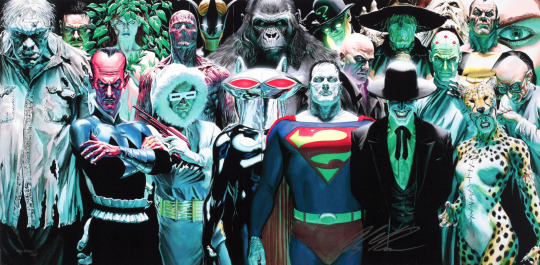
31 days of DC
Day 17: What's your favorite supervillain team?
Legion of Doom
#dc comics#joker#lex luthor#cheetah#giganta#bizarro#sinestro#gorilla grodd#solomon grundy#captain cold#black manta#doctor silvana#brainiac#parasite#scarecrow#poison ivy#black adam#the riddler#clayface#toyman#metallo
16 notes
·
View notes
Photo


HOUSE OF VILLAINY
DOCTOR SIVANA
Created By: Bill Parker & C.C. Beck
1st Appearance: Whiz #2 - March, 1940
Publisher: Fawcett Comics
Team: Villain
Actor: Ernest Thesiger (1879 - 1961)
THE RIVAL
Created By: John Bloome & Joe Kubert
1st Appearance: Flash Comics #104 Feb 1949
Publisher: All-American Periodicals
Team: Villain
Actor: Keenan Wynn (1916 - 1986)
3 notes
·
View notes
Text
Mechs Ships Tournament: Transport Bracket Round 1 Poll 5
The Silvana: A ship Doctor Carmilla spent some time on after leaving the Mechanisms. It apparently has a bad Wi-Fi connection, according to the Mechanisms fandom wiki.
The Pandora: Another ship from the tumblr Mechanisms roleplay verse! She used to be known for acts of incredible violence, more a legend than something known as fact. Nowadays, she roams the galaxy with Heracles, among others, and has an ongoing relationship with the Völuspá, and with Briar Rose.
12 notes
·
View notes
Text
tag game
thank you so much to @mellothetic, I love doing these 😊😊
1. Last song: "First Time" by Lucy Dacus
2. Currently watching: Somehow. I am not watching. Anything right now. Unless you count rewatching some Doctor Who scenes for fic-writing. (Guess that's what over-focusing on writing and trying to parse out Health Things™ will do to you.)
3. Three ships: Currently, we are in Doctor/River land (Doctor Who), but there's also, as always, Jaime/Cersei (GoT), and I've been thinking a lot about Mireille/Silvana from Noir (2001) lately (early 2000s ambiguous anime femslash make some noise.......)
4.Favorite color: PURPLE
5. Currently consuming: English Breakfast Tea
6. First ship: lmao, probably Leafpool and Crowfeather from the Warrior Cats books. I was DISTRAUGHT in middle school when they didn't end up together.
7. Relationship status: legally married to Himeno from Chainsaw Man
8. Last movie: Girl's Revenge (it was a mediocre movie)
9.Currently working on: THIS GOD-FORSAKEN DOCTOR/RIVER FIC PLEASE @BRAIN LET ME FINISH IT. (Also. A character analysis post for River regarding her emotional state in The Christmas Special™)
TAGGING: @strawberrylovely, @blondiest, @nightingalesighs, @joanna-lannister, @ingoodjesst, @escapetheshark, and anyone else who sees this!
11 notes
·
View notes
Note
what relationship do winx/specialists etc have with their grandparents?
congratulations anon you made me want to draw them. you have untold powers to make me do such a thing. UNFORTUNATELY I ACTUALLY DIDN'T DRAW SHIT LMAO, just because that's a LOT of people and I'm. not about that. but I did do at LEAST some thinking of them! only covering the Winx here, maybe thoughts on the guys later.
Bloom has 2 sets of grandparents given, y'know, her DealTM. Both her grandpas passed away when she was a baby so she doesn't have memories of them, but she grew up lovingly with her grandmas. Silvana is her maternal grandma, a sweet old lady who taught her a bit of Spanish (as a reminder Vanessa is Mexican-American in the AU and so Bloom grew up with a bit of their traditions) and filled her with meals every time she visited. Her paternal grandma, Elizabeth doesn't visit as often as she lives in a different state, but Bloom loves her all the same. She's a retired office lady and always pushed Bloom to try everything she wanted - she was the one to buy Bloom a bow and archery gloves when she wanted to start archery.
As for Oritel and Marion's parents, she only knows her paternal grandpa (Eustace) and her maternal grandma (Lillia), and doesn't really have an opinion on them, having spent so little time. Both Eustace and Lillia also don't really try to get close to her that much as they can see that Bloom is just awkward about the whole deal and so don't want to push her.
Flora has both her maternal grandparents alive (Rosalía and Maurice(, while her paternal grandma passed away when she was a kid, before Miele was born, leaving her only with her grandpa Hugo. Rosalía is a witch (the Witch of Roses, Flora Source), and she comes from a VERY long line of witches. Alyssa broke the tradition by not pursuing morpher magic at all while Flora became a fairy, but she doesn't resent either for it - even being one of Flora's earliest magic tutors. Maurice is a doctor, and isn't as close with Flora as Rosalía but still loves her. As for Hugo, he's a retired lumberjack and was partially responsible for Flora's interest in physical activity.
STELLA HAS TECHNICALLY 8 GRANDPARENTS BUT I'M JUST GONNA FOCUS ON RADIUS AND LUNA'S PARENTS FOR MY SANITY LMAO. She only ever personally met her paternal grandmother, the former Queen Celeste, Sorceress of Sunny Days. Stella loves her grandma, finding her the funniest person alive, and confirms the Oriol royal family has charisma inserted in the bloodline. She knows only Luna's father, Fabrizio, is alive, but Luna doesn't have the best relationship with him and as such she never saw him.
Musa has never met anyone from her dad's side of the family and has no desire to, meaning she's way closer to her mom's side. She loves her grandma Wei Yang, who used to let her use her painting supplies and always loved whatever she drew, and her grandpa Jun, who was a big sports fan and was 100% behind his granddaughter getting into boxing and is a bit sad she dropped it once she went to Alfea.
If Aisha had a tense relationship with her parents, it was even worse with her grandparents, at least her paternal ones. Niobe's father, Ermias, was nice and doting enough, but she never interacted much with him compared with Teredor's parents, former Emperor Oceanus and former Empress Lulit. They were just as overbearing as Teredor and Niobe were if not more so, and she dreaded their visits almost as much as any of her other forced activites.
As for Tecna, she has all of her grandparents alive and well. Her maternal ones, Amara and William are actually farmers, who proudly boast of making the best cheese in all of Zenith, and Tecna loves them even if she dreads visiting them because she usually ends up helping at the farm and she does not like physical work lmao. Her paternal set are Ulric and Theodore (Anthonius is adopted), who are a retired electrician (Theodore) and a still-active Conjuror (Conjuror of Blizzards, Ice Source). The two men used to babysit Tecna when her parents had to work off-home and helped her with her magic development. Theodore, who Tecna was named after (her real name is Theodora in the AU as a reminder) was also the one that gave her that nickname, seeing her so interested in the machinery around the house.
22 notes
·
View notes
Note
Hello, dear, would you like to stop by The Silvana soon for a lunch?
-Carmilla
yeah of course!! you got a day in mind? @ask-doctor-carmilla
0 notes
Link
33-year-old billionaire throws 4.5 billion yuan to give his Stanford girlfriend a 150-person research institute. This is the most romantic "I love you" I have ever seen.
0 notes
Text
An Ambassador Without a Country
The Afghan statesman Zalmai Rassoul is recognized by the governments of the United Kingdom and Ireland—but not by the Taliban.
— By Steve Coll | August 13, 2023
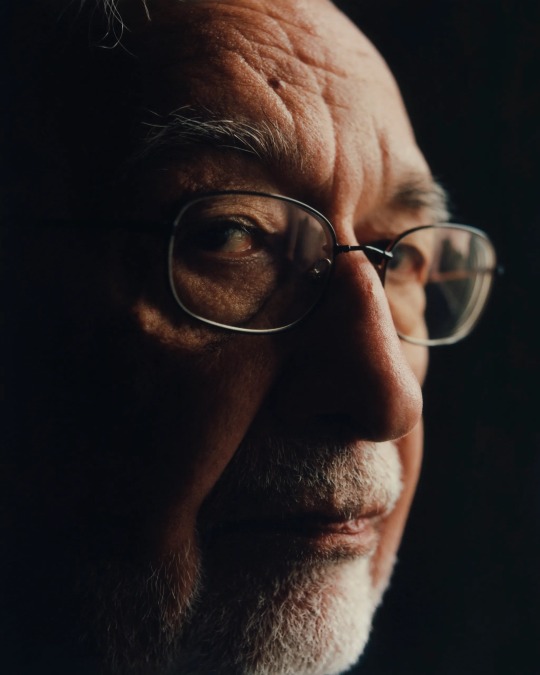
Photographs By Silvana Trevale For The New Yorker
King Amanullah Khan of Afghanistan, who reigned after his country gained independence from Great Britain, in 1919, collected automobiles and tried to modernize Afghan society through reforms such as compulsory education. In 1925, his government purchased a new Embassy in London, a four-story mid-Victorian edifice at Princes Gate, across Kensington Road from Hyde Park, near the Royal Albert Hall. The King’s change agenda provoked a violent revolt, however, and in 1929 Amanullah fled Kabul, reportedly in a Rolls-Royce. (He died in Switzerland in 1960.) Yet the London Embassy remained—a graceful and rapidly appreciating possession of an isolated, often vulnerable nation.
Zalmai Rassoul, a nephew of Amanullah’s who is now eighty years old, today lives alone in an apartment on the Embassy’s upper floors. In 2020, President Ashraf Ghani appointed Rassoul as the Ambassador to the United Kingdom and Ireland. In June, 2021, Queen Elizabeth II met him over Zoom, to accept his credentials in the U.K. By that time, the Taliban had stormed dozens of Afghan district capitals, in an escalating offensive against Ghani’s Islamic Republic, the constitutional regime that had been created after the U.S.-led invasion in 2001 and was protected for almost two decades by nato troops. On August 15th, Kabul fell, and Ghani fled in a helicopter. As the Taliban took over the government, Rassoul stayed put at Princes Gate.
Since then, neither the United Nations nor any of its member states has recognized the Islamic Emirate, as the Taliban call their regime, largely because it seized power by force and imposed draconian restrictions on female education and on the ability of Afghan women to work freely. In the autumn of 2021, the British Foreign Office informed Rassoul that he could carry on as Ambassador. Almost two years later, the Islamic Republic’s red, green, and black flag still flies above the Embassy’s entrance. “So far, we are guests of the United Kingdom,” Rassoul told me recently, over tea in a cavernous ground-floor office. “It’s very strange,” he conceded. “When I’m asked who you are representing, I say, ‘The Afghan people,’ because we don’t have anymore a government.”
The Taliban, of course, would beg to differ. “We believe that all embassies belong to the state of Afghanistan and should be handed over to the authorities in power” so that the Islamic Emirate can run them in a “transparent and effective manner,” Abdul Qahar Balkhi, a spokesperson for the Ministry of Foreign Affairs in Kabul, told me. Rassoul is not the only Ghani-era squatter in an Afghan Embassy. When Kabul fell, the country maintained around forty Embassies around the world. Today, as many as twenty—mainly in Europe, but also in Ottawa and Seoul and a few other places—are still run by Republic-era diplomats. In Beijing, Islamabad, and other capitals, however, governments have accepted Taliban-appointed diplomats, even while withholding formal recognition of the regime. Balkhi said that fourteen Embassies are now managed by “newly appointed diplomats,” while at a number of other outposts diplomats from the Republic era “are fully coördinating with Kabul.”
Of all the Republic-era Ambassadors, Rassoul is by far the most politically prominent. He was educated in France as a nephrologist and worked as a doctor and a medical researcher in Saudi Arabia during the nineteen-eighties, after the Soviet invasion of Afghanistan stirred an uprising by mujahideen rebels armed by the C.I.A. Later, during the first era of Taliban rule, he moved to Rome to serve as a political adviser to Zahir Shah, the exiled former King whose father had restored the country’s monarchy after Amanullah’s departure, and who reigned over a period of relative stability and prosperity from the early nineteen-thirties until 1973, when he was ousted in a coup d’état. After the Taliban were removed from power, Rassoul became national-security adviser and then foreign minister under President Hamid Karzai. (Karzai has remained in Kabul since the Taliban takeover. Ghani is in the U.A.E.) Later, in 2014, Rassoul ran unsuccessfully for the Presidency. Youthful-looking for his years, he possesses the gentle manners of a royal scion, and is a rare leader from the Republic era who is not a lightning rod for his compatriots’ anger. “He’s a gentleman. People respect him,” Nasir Andisha, a Republic-era diplomat still serving in Geneva, and an informal adviser to the anti-Taliban National Resistance Front, told me. “He was probably the least controversial figure in politics in Afghanistan.”
Rassoul has lately been working with other Republic-era Ambassadors and diaspora figures to develop a plan for their country’s future. “I’m a politician, and, wherever I am, I’m involved in politics,” he told me, speaking publicly for the first time about his work and life at the London Embassy. “You know, politics is like a disease, when you get it.” In March, Andisha hosted a meeting of twenty-one Republic-era envoys in Geneva, where they formed the Council of Ambassadors and named Rassoul as a permanent co-chair, with a rotating partner. The envoys all oppose the Taliban. But “war is not a solution,” Rassoul said, and the best place to start is with intra-Afghan dialogue.
Rassoul’s apartment has a charming view of Hyde Park, and it is comfortably if impersonally furnished, suggesting a four-star hotel with Central Asian accents. For a touch of home, the Ambassador has mounted black-and-white photos of his royal ancestors. Each weekday morning at about nine o’clock, he goes downstairs to his office, where he meets Embassy colleagues as well as Afghan and other visitors. (A handful of salaried diplomats, mainly engaged in consular work, and a driver also remain at the Embassy.) At midday, he returns upstairs for lunch, and then goes down again to check on new developments. Sometimes, there aren’t any. Most evenings, he takes a long walk in the park. About twice a week, he plays golf at a nearby course. (He took up the sport while in exile in Rome.) Other London embassies still invite him to receptions celebrating national holidays or fêting distinguished visitors, and other rituals of diplomatic life. “I will go there and spend half an hour or an hour, just to show that Afghanistan exists,” he said.
Rassoul never married—work always seemed to get in the way, he said—and the only surviving member of his immediate family is a sister living in Brazil. I asked whether he was lonely. “I’m very comfortable here compared to all my compatriots, who, unfortunately, are running around to find a place to stay,” he answered, referring to the tens of thousands of Afghan refugees who had settled in the U.K. in 2021, many of whom have had to navigate overnight transformations from lives of relative privilege to the insecurities and indignities of refugee status. “But, intellectually, I am very frustrated.” Among other things, he still grieves for the Islamic Republic, “this tremendous international effort to bring Afghanistan from ground zero to, despite all the problems, an advanced country in the region.”

Zalmai Rassoul, in the London Embassy
In the initial months after the Republic’s fall, the Biden Administration and European allies engaged with the Taliban, hoping to address Afghanistan’s severe humanitarian needs and to coöperate on counterterrorism. But, in March of 2022, on instructions from the arch-conservative Supreme Leader, Hibatullah Akhundzada, the Taliban decided to prohibit girls from attending secondary school. Since then, such restrictions have tightened, and, according to U.N. human-rights experts, they now constitute the most oppressive regime for women and girls worldwide. In late June, Richard Bennett, the U.N.’s human-rights rapporteur for Afghanistan, denounced the Taliban’s gender policies as “grave, systemic and institutionalized discrimination.” In this atmosphere, although British and U.S. engagement with the Taliban has continued, Rassoul and other Republic-era diplomats find that they are being welcomed at more official meetings than before. With the Taliban’s permission, Hamid Karzai visited London from Kabul this spring for a private visit with King Charles III; Rassoul joined him for a meeting at the Foreign Office. At a recent session of the U.N. Human Rights Council, in Geneva, the Taliban were excluded, and Nasir Andisha, the Ghani-era diplomat, introduced several Afghan women as speakers.
The Taliban’s strategy appears to be to wait out the recalcitrant Ambassadors while its government pursues formal recognition, aided by what has thus far been qualified but significant diplomatic support from China and Russia. Strikingly, the Taliban’s foreign ministry has not tried as yet to disrupt the consular work of non-Taliban Embassies. Indeed, according to Rassoul, the London Embassy funds its reduced operations with fees earned from issuing travel visas, passport extensions, birth certificates, and marriage certificates—and the Taliban still recognize most of these documents. “We attach great importance to serving and resolving problems of Afghans,” Balkhi said, when I asked him why the Taliban do so. Some Taliban officials travel on Islamic Republic-era passports, a Western official told me, because the Taliban have not yet issued their own. Even if they did, Taliban passports might not work very well, since the Kabul government has not been formally recognized.
Rassoul declined to say how much revenue the London Embassy generates through consular work, but it is apparently enough to fund the salaries of the staff. There is some tension between those Republic-era Ambassadors who can raise revenue from consular services provided to sizable Afghan populations (there are some hundred and fifty thousand Afghans living in Britain, according to Rassoul) and those who have no such population to serve. Afghanistan’s U.N. mission, in New York, which has never had a consular function, has fallen into arrears on utility bills. Naseer Faiq, a Republic-era career diplomat, is the mission’s chargé d’affaires—recognized by the U.N. but not the Taliban. “I have been trying to communicate this situation to the management of the building,” he told me. “Of course, this is not easy.” I asked how he pays for groceries. “My wife is working, and she is supporting us,” he said.
The struggle for control of the Embassies is partly rooted in the unsuccessful U.S. diplomacy that aided the Taliban’s military victory two years ago. In 2018, Secretary of State Mike Pompeo chose Zalmay Khalilzad, who had served as the U.S. Ambassador to Afghanistan, Iraq, and the U.N. during the George W. Bush Administration, to negotiate with the Taliban. In February, 2020, the two sides announced a deal in which the U.S. promised to withdraw all its troops by May, 2021, in exchange for pledges that the Taliban would prevent Al Qaeda and other groups from launching attacks. Because the Taliban refused to deal with Ghani’s regime, the Republic was largely left out of the negotiations, and later talks between the Taliban and Ghani’s representatives foundered, leaving the Taliban free to pursue a military victory. Joe Biden inherited the diplomatic accord, and, although he described it as “perhaps not what I would have negotiated myself,” in April, 2021, he nonetheless said that the U.S. would pull out all its troops by September 11th. That announcement precipitated the Islamic Republic’s rapid collapse, culminating in the infamous scenes of evacuation and chaos at the Kabul airport in August. “It was a de-facto recognition of the Taliban as the future government of Afghanistan,” Rassoul said, of the U.S. decision to negotiate directly with the Republic’s enemies. He now wants to give diplomacy a chance partly because Afghanistan’s history suggests that no dictatorship of the Taliban’s kind is likely to last long, and so preparations should be made now for what may follow. In any event, “We cannot just sit,” he told me. “If we don’t want the use of force, a war, and we don’t do anything politically, that means we accept the situation with the Taliban there.”
After the Taliban takeover, a number of nations—including the U.K., France, Germany, Poland, Australia, India, and Kuwait—allowed senior Republic-era diplomats to remain at Afghan Embassies. In Washington, D.C., however, a different story unfolded. When Kabul fell, Adela Raz, a thirty-five-year-old woman with a master’s degree in law and diplomacy from Tufts, led the Embassy in Washington, on Wyoming Avenue. On October 27, 2021, Citibank froze the Embassy’s accounts, citing the requirements of U.S. sanctions imposed against the Taliban. Raz and her then counterpart at the U.N., Ghulam Isaczai, wrote to Secretary of State Antony Blinken, urging him to unblock the accounts. They cited the “critical services” that the Embassy provided to tens of thousands of Afghan refugees then pouring into the U.S., and argued that Citibank’s application of sanctions was mistaken, saying, “We continue to function solely as servants of the Afghan people and do not maintain any association with, work at the direction of, or pay any funds to the Taliban.” In January, after some back-and-forth, the State Department sent the Afghan Embassy an unsigned diplomatic note—a kind of official memorandum—that described Citibank’s actions as “independent” of the Biden Administration, and judged that it was “highly unlikely” the bank would unblock the Embassy funds. (Citi declined to comment.)
So the Biden Administration proposed to take “custodial” charge of the Washington Embassy and two Afghan consulates in the U.S.—but not the mission to the U.N.—meaning that the U.S. would pay for the properties’ upkeep and manage access. Raz could remain as Ambassador, the diplomatic note said, but all other Afghan diplomats accredited in the U.S. would be terminated, and their diplomatic visas would be cancelled. Raz declined to stay in place without her colleagues, according to people familiar with the matter, and took a position at Princeton’s School of Public and International Affairs. (Raz declined to comment.) Early in 2022, the State Department took control of the Afghan properties and shut them, which was a “normal procedure for embassies when they cannot support operations financially,” a department spokesperson told me. “U.S. officials engaged with the Afghan Embassy and its bank, but were unable to identify an immediate solution. . . . The Embassy’s underlying financial challenge was that it was no longer receiving funds from Kabul.” When I walked by the chancery on a recent weekday, no flag flew from it.
The D.C. Embassy’s fate reflects a larger truth about Afghanistan in Washington these days: it is an unpopular subject, partly because the Islamic Republic’s fall has become a talking point in polarized partisan politics. On a recent visit to Washington, Andisha was struck by the indifference and resignation he encountered among policymakers and regional specialists. He summed up what he heard as “The Taliban suck, but we have to have some coöperation with them. . . . And there is no alternative.”
It is appealing to imagine that diplomacy—an “intra-Afghan dialogue,” or the like—might address Afghanistan’s fragmentation and perhaps coax the Taliban toward political pluralism. But, in 2021, at a time when Ghani’s regime controlled a large army, the capital, and major cities, the Islamic Republic’s efforts to negotiate failed miserably; it is hard to see why the Taliban would make concessions now. The Council of Ambassadors is one of a number of organizing efforts led by Islamic Republic-era figures in exile. The National Resistance Front, led by Ahmad Massoud, the son of the anti-Taliban guerrilla leader Ahmad Shah Massoud, has mounted armed resistance in northern Afghanistan, but has been battered by brutal Taliban counterattacks and reprisals against civilians. In general, there is little comity among the diaspora’s political factions. After the shock of Kabul’s fall, “There’s a level of mistrust,” Sima Samar, the former chairwoman of the Afghanistan Independent Human Rights Commission, told me. “Maybe the U.N. or the U.S. or Europe could bring people together . . . to facilitate an understanding or rebuilding of trust.”
It isn’t clear, though, who should participate in such an effort, or whether Western involvement would help. “My message to Afghan political actors has always been to organize themselves and then summon the international community,” Thomas West, the Biden Administration’s special representative for Afghanistan, told me. Younger Afghan activists are trying to assert themselves, pointing out that they are uncompromised by the Republic’s failures. “I’m not a Talib and I’ll never be a Talib, but I do recognize that we’re all on the same ship and it’s sinking,” Obaidullah Baheer, an adjunct lecturer at the American University of Afghanistan, who is now a doctoral student at the New School, told me. Baheer is part of a loose network of next-generation advocates who have emerged on social media and at international conferences since 2021. “Everyone—especially the international community—wants short-term fixes,” Baheer added. “As always, they look for the silver bullet. That has never really helped Afghanistan.”
I asked Rassoul why he thought the Republic failed. “It’s our fault,” he said. “We could not consolidate democracy.” Afghans “participated in elections, taking the risk. You have seen that. But the institutions in Afghanistan destroyed the democratic process. . . . Corruption played a key role.” So did Afghanistan’s status as a ward of rich nations. “We believed they would be there for a long time and give us money,” he said, but “it was a miracle that the international community believed in Afghanistan for twenty years.”
The Taliban, meanwhile, have shown little interest in talking to exiled politicians or in any process that does not recognize their sovereignty and legitimacy. “The Islamic Emirate has opened its doors for all Afghans, whether living inside or outside Afghanistan, to hold meetings and discussions about issues with the leadership,” Balkhi said. These meetings “take place nearly every single day with tribal elders, scholars, academics, and other strata of society.” If exiles want to participate, he implied, they can come home.
Zalmai Rassoul seems unlikely to do so. In his ninth decade, he is enduring his third exile, and the royalist branches of Afghan politics to which he belongs have had a rough time since the nineteen-seventies, attacked by Communists and Islamists alike. Still, royals in exile can be susceptible to dreams of restoration, no matter how implausible the path may appear. “There is some sort of nostalgia,” he said. “Now that the Republic has been a failure, a lot of people give reference to the monarchy time [as] a really good time in Afghanistan. Maybe some people think that a monarchy—a constitutional monarchy, maybe—is good for Afghanistan.” Rassoul said that he himself does not support that idea, and did not mention his own qualifications, but, when I spoke with Andisha, he volunteered half-jokingly, “If we have a choice later in Afghanistan, we’ll call him a king. That will solve a lot of problems.” ♦
0 notes
Photo




Captain Marvel Adventures #5 (1941)
art by C.C. Beck
107 notes
·
View notes
Photo

DSC 4-11-19 Dr. Silvana
7 notes
·
View notes
Photo

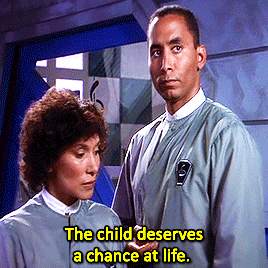
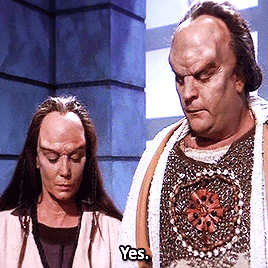

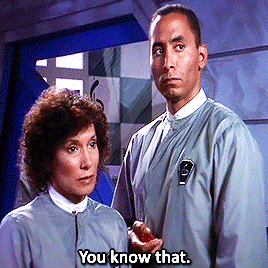

#Babylon 5#B5#Bab 5#Dr. Franklin#Stephen Franklin#Doctor Franklin#Franklin#Richard Biggs#M'Ola#Tricia O'Neil#Tharg#Stephen Lee#Maya Hernandez#Silvana Gallardo#Yum Yum Pod#Yum Yum Podcast
8 notes
·
View notes
Text
Mechs Ships Tournament: Transport Bracket Round 2 Poll 3
The Silvana: A ship Doctor Carmilla spent some time on after leaving the Mechanisms. It apparently has a bad Wi-Fi connection, according to the Mechanisms fandom wiki.
Moon Kaiser’s Life Pod: It was shielded against the force of twenty suns, even if Tim couldn’t get the visor up in time.
Arthur’s Lifepod: the last remnants of Fort Galfridian, and the tool Mordred used to save his father before plunging into the sun. Who knows how long Arthur stayed there, mourning his fallen world? He might still be there.
#mechs ships tournament#the mechs#the mechanisms#spumblr#the silvana#moon kaiser#hnoc#high noon over camelot
12 notes
·
View notes
Text
5 OTPs from 5 Fandoms
Thank you to @joanna-lannister for the tag!!!!
In no particular order:
Game of Thrones-Jaime/Cersei
BBC Sherlock-Sherlock/Irene
Doctor Who-Doctor/River
Noir (2001)-Mireille/Silvana
Doom Patrol-Rita/Laura
ANYONE CAN DO THIS IF THEY WANT TO! JUST SAY I TAGGED YOU :)
#too foggy to remember who to tag in this so have a blanket tag!#obviously there are a bunch more things I ship but like. these are the ones at the forefront of my mind rn#the name of an ancient tag
1 note
·
View note
Conversation
Mom: Hon, what’s Dr. Reed’s full name?
Me: Oh... he’s Reed Richards, mom. He’s Mr. Fantastic, from the Fantastic Four?
*inhales*
he’s ioan gruffudd in those movies where he’s married to jessica alba? sue storm? the invisible girl who’s brother is johnny storm who’s the human torch?... but like not the first human torch ‘cuase the first torch was called jim hammond he’s like a really old character like he was friend’s with captain america during ww2! and then he died, but it turnes out he wasn’t dead dead so then namor, who’s like marvel’s equivalent to aquaman? you don’t know him, it doesn’t matter, he’s sassy and awesome but he’s kind of an ass sometimes and he isn’t polite so you wouldn’t like him. anyway so he and bucky... bucky’s the hot guy with the greasy hair and the metal arm? he’s played by sebastian stan? you know the drunk guy who found serena’s father in gossip girl?, well, they ended up finally killing the original torch because he had been turned into a weapon, but not a weapon like when bucky was brainwashed into the winter soldier. no, this one was ugly..... but that was many years after so by then marvel had like “borrowed” the powers of the torch for johnny storm. In the movies you watched he’s the hot guy who goes skiing and ends up naked with the nurse in the middle of the mountains. he’s played by chris evans? the guy in that movie my dad hatted and I loved, snowpiercer? anyhow, that same actor then played steve rogers in the captain america movies and it’s funny ‘cause they’re both marvel characters and I know you must think like why would marvel do that since they’re expanding the mcu and this characters canonically collide, right? but this wasn’t really a problem because marvel had sold the rights to the fantastic four to fox. you know, like they sold peter parker to sony? and that one is a real mess if you want to stick to canon! like having spider-man in civil war was a weird miracle that happens once in a lifetime and only because the russo brothers are the best thing that ever happened to Marvel and also because Disney is like the meanest titan in the playground right now and sony had no other choice because the last couple of spider-man movies sucked so bad! remember the last part of the first trilogy? the one with the black spider-man and sandman? god, that movie was bad! and then the ones titled amazing spider-man featured andrew garfield, you know the guy? he’s the friend that gets screwed over when jesse eisenberg becomes friends with justin timberlake and creates facebook? well, those movies weren’t that bad but still, how’s ever gonna believe he was in high school? no one looks that good in high school, right? hahaha
*exhales*
So, anyways................. He’s called Reed Richards
Mom: ... Dr. Reed as in your gastroenterologist, honey
Me: Oh, right... Gerardo, mom. He’s name’s Gerardo
#omg#i was so into it#i hate everything#:(#marvel#like a lot of marvel#and also Gerardo Reed#my very nice doctor#about me#callate silvana
10 notes
·
View notes
Photo



World By Us Infodump!
Thanks to some leaks from alexandradperreault on Instagram, we’ve got some info on the new lineup! They posted all the stock images for the girls, including their books’ previews, as well as several sets!
Makena Williams
Makena is interested in fashion! Her other interests are art, cooking, and bike riding.
Her name is pronounced ma-KAY-na, meaning “happy one” in Swahili
She is thirteen years old and goes to Aspire Academy Middle School in Washington DC.
She lives in Anacostia with her mom (Chandra), dad (Tony) and younger sister Amari, 11. She also has an Aunt Belinda who she calls Auntie Bling.
Favorite colors: “purple and glitter.”
Her Aspire Academy “besties” are Adeline and Najee, with Maritza and Evette listed as her newest friends.
You can see her academy ID peeking out of her bag in the journal picture, and it states her birthday is 8-25-08.
She has a blog, Makenashine!
Her collection is littered with a gold butterfly motif! She also has a notebook that reads “We rise by lifting others.”
From the preview page of her book: she’s excited to go shopping since the pandemic prevented her from doing so, and she’s also excited to pick clothing for school as she wore a uniform before.
Maritza Ochoa
Maritza is into soccer!
Maritza’s name is pronounced mah-REET-zah, and her nickname is Itza!
Her family includes her Mom, Erika, who is Bolivian; her Dad, Enrique, who is Mexican; her brother, Javier, and their pug Suerte. Her maternal grandparents are Abuelo Joaquim and Abuela Silvana, and her paternal grandparents are Abuelo Julias and Abuela Nora.
She has an Aunt Mari whom she was named after, Tia Mari also gave her her journal.
She has two friends from school– Sierra, her oldest friend, dances ballet folklórico and Violeta is another soccer fan.
Her school is DC Bilingual Middle School.
Current favorite food is elotes.
Her birthday is April 10.
Maritza has the rainbow heart in her journal. Likely she’s our rumored queer doll!
From the preview page of her book: her story begins in October with a celebration of Hispanic Heritage Month, and she lives in Columbia Heights.
Evette Peeters
Evette likes nature, upcycling, anything vintage, equality, swimming and putting her family first. She dislikes racism, litterbugs and pandemics. (same girl)
Evettte is thirteen years old.
Evette’s mother is a doctor, her father is a construction worker, and she has a younger brother named Bud (10).
Her father is white (likely dutch considering the surname) and her mother is black.
Her paternal grandparents are Grandma and Grandpa Peeters, her maternal grandmother’s name is Gran E (standing for “Evon”)
Her journal page also has a paintbrush drawn beside it, so she may be a bit of an artist as well!
From the preview page of her book: The year before the story, Evette and her family put up a sign thanking essential workers. Evette drew a monarch butterfly on it, to represent strength and endurance. She’s not a huge fan of bugs but understands their environmental importance. She and her family have a playful dynamic.
Community Center
The Community Center Set includes a desk with Makena’s laptop, along with several stickers reading things like “Stronger Together”, “Now is the time for change”, “Recycle Resist Rethink”, “Let Love Win,” etc. To the right of the desk is a water machine, above which is the queer Equality sticker. On the back are several colorful cubbies, and on top is a plant.
There’s a pink-and-orange themed couch with a black rug, white disco(?) light, and gold sequin pillow.
There’s a craft table with a book reading “Unity.”
There’s also a minifridge with sparkling water and vegetables, as well as more rainbow stickers, including a rainbow heart.
These sets are very expensive; the only one less than $100 is the minifridge, which is $50.
#world by us#american girl#american girl dolls#american girls#queer#makena williams#maritza ochoa#evette peeters#mine#wbu squad#americangirlstar
101 notes
·
View notes